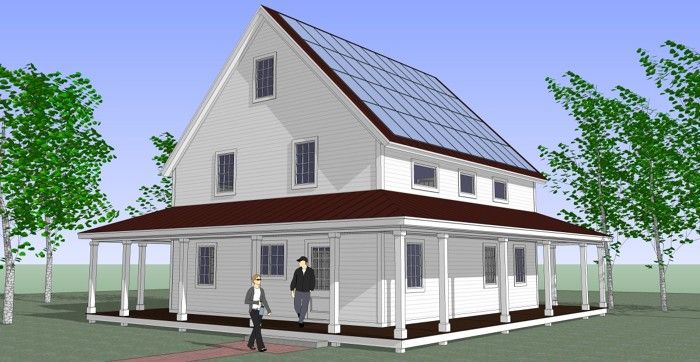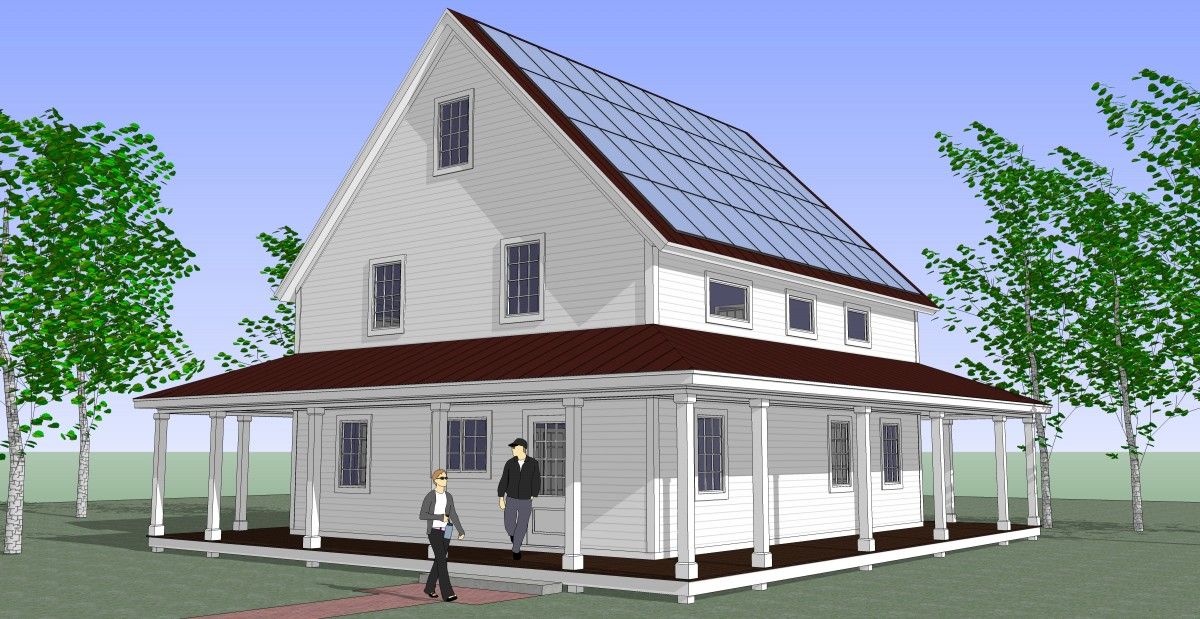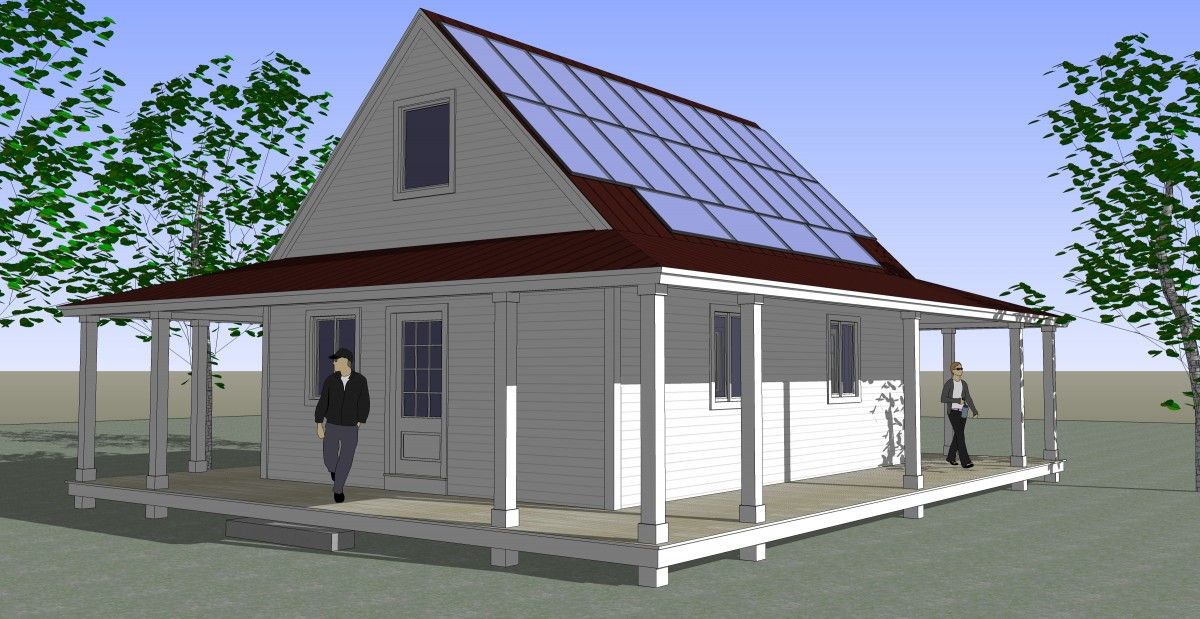Net-Zero Energy House in a Kit

A manufacturer of structural insulated panels (SIPs) in Brattleboro, Vt., has launched a line of net-zero-energy kit houses that will allow owner/builders or developers to assemble a basic shell for about $150 per sq. ft.
SmartHomze come in five sizes that range from 560 sq. ft. to 1700 sq. ft. Kits include materials for exterior walls, the roof, doors and windows, photovoltaic modules, heating and cooling equipment, and a heat-recovery ventilator. Buyers are responsible for construction, interior partitions, appliances, and finishes.
Smarthomze is the brainchild of Dave Gauthier, president of Vantem Panels, who thinks the houses can be built for well under the $200 to $250 average for high-performance homes.
Looking for a wider net-zero market
Gauthier joined the company, then Winter Panel, in 1995, and he says he has long had an interest in net-zero design. His projects have included a net-zero Habitat for Humanity community designed with the help of Oak Ridge National Laboratory.
“We see a lot of high-end houses come through our shop,” he said in a telephone interview, “and I wanted to make net-zero-energy housing affordable to a broader spectrum of the market.
“They’re relatively modest in size. My thinking on that was you could start with a little house and as your needs grow, and a family comes along or what have you, you can always expand the house from there, just like they did with a lot of the old traditional New England farmsteads.”
Houses have open floor plans, so owners will have an easy time of customizing them. Also, they should be relatively easy to expand.
What you get in the box
Vantem designed the houses to be built on piers, in part because it made the energy modeling easier, Gauthier said. The floor and exterior walls are 6-1/2-in. urethane SIPs (R-38) and the roof is an 8-1/4-in. panel rated at R-50. The houses also could be built on a slab or conventional foundation.
Some of the other features that are included:
-
- A choice of vinyl or fiber-cement siding.
-
- Triple-glazed vinyl casement windows from either Mathews Brothers of Belfast, Maine, or Marvin. Windows have U-values of 0.18 and 0.2, respectively.
-
- Ductless-minisplit heating and cooling, either from Mitsubishi or Fujitsu, plus a heat-recovery ventilator.
-
- A photovoltaic package, ranging in size from 6kw to 10kw depending on what house you buy, including the inverter.
-
- A standing-seam metal roof.
You won’t get any interior finishes – no finish floors, interior partitions, cabinets, appliances or plumbing fixtures. The kits include no wiring.
Estimated costs for finishing the houses vary, Gauthier says, affecting the total cost per square foot of a particular kit.
For example, the smallest house kit, at 560 sq. ft., sells for about $73,000, with estimated costs to finish it about $35,000. That makes the cost per square foot about $192. The next size up, the 750, sells for $75,000 with estimated finish costs of about $40,000, giving it a total cost of about $153 per sq. ft. The largest house, at 1700 sq. ft., costs about $133,000 with estimated finishing costs of about $100,000, or about $137 per sq. ft., Gauthier says.
“When people talk about square-footage pricing, that’s what we’re estimating for an installed kit finished out with modest finishings – not Italian marble, and not including land or utility hookups,” Gauthier said. “It would include the piers, but not the well or septic.”
Interest from developers
Gauthier says the kits have just been announced. So far, there’s been some interest from developers, but no sales. One Massachusetts builder was interested in five units, another as many as 30. A Maine builder may want a couple of them.
“We’re on the cusp,” he said. “But we don’t have any in the ground yet. Until it’s actually in the ground and the check has cleared, it’s not a real sale in my mind.”



























View Comments
a question, rather than a comment: under the current tax laws, what is the maximum allowable tax credit for the solar panels which come with this house. assume the 1700 sq. ft. model, or if you have the time, tell me the range from smallest to highest house. these credits expire in 2016, i believe, so the manufacturer should advertise this aggressively.